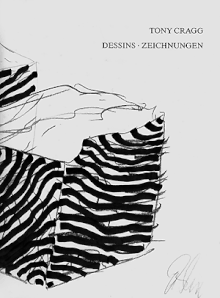ARTIST MONOGRAPHS
|
|
in stock $36.00 Free Shipping UPS GROUND IN THE CONTINENTAL U.S. |
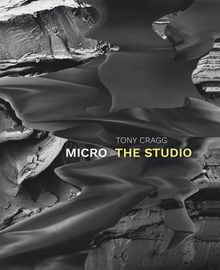 Tony Cragg: Micro
Tony Cragg: Micro
The Studio
Published by Walther König, Köln.
Text by Tony Cragg, Frank Tschentscher, Jon Wood.
In Micro, the British sculptor (born 1949) offers a unique perspective on the materials of the artist. Using microscopic technology, Cragg photographs artist's tools such as paper and pens, materials such as limestone, marble and diabase, and the most vital artist tool of all, the body.
PUBLISHER
Walther König, Köln
BOOK FORMAT
Hardcover, 9.5 x 12.25 in. / 264 pgs / 27 color / 193 bw.
PUBLISHING STATUS
Pub Date 10/8/2019
Active
DISTRIBUTION
D.A.P. Exclusive
Catalog: SPRING 2020
PRODUCT DETAILS
ISBN 9783960985815 FLAT40
List Price: $69.95 CAD $92.50
AVAILABILITY
In stock
in stock $69.95 Free Shipping UPS GROUND IN THE CONTINENTAL U.S. |
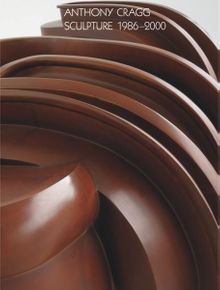 Anthony Cragg: Sculpture 1986–2000
Anthony Cragg: Sculpture 1986–2000
Volume III
Published by Walther König, Köln.
Text by Lewis Biggs, Germano Celant, Lynne Cooke, Demosthenes Dawetas, Catherine Grenier, Thomas Mc Evilley, Peter Schjeldahl, Jon Wood.
Between 1986 and 2000, Anthony Cragg (born 1949) transitioned from making sculptures using found objects to a more studio-based practice in which the found materials themselves became the subject and content of his sculptures. This publication begins where the previous volume, Sculpture 1969–1985, left off.
PUBLISHER
Walther König, Köln
BOOK FORMAT
Hardcover, 8.75 x 11.25 in. / 536 pgs / 327 color.
PUBLISHING STATUS
Pub Date 11/20/2018
Active
DISTRIBUTION
D.A.P. Exclusive
Catalog: SPRING 2019 p. 31
PRODUCT DETAILS
ISBN 9783960981497 FLAT40
List Price: $69.95 CAD $92.50
AVAILABILITY
Out of stock
STATUS: Out of stock Temporarily out of stock pending additional inventory. |
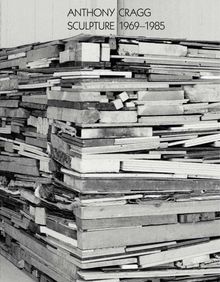 Anthony Cragg: Sculpture 1969–85
Anthony Cragg: Sculpture 1969–85
Volume II
Published by Walther König, Köln.
Text by Germano Celant, Demosthenes Davvetas, Mark Francis, Michael Newman, Jon Wood.
The second volume in the series documenting the works of British artist Anthony Cragg (born 1949) covers his sculptural oeuvre from 1969 to 1985, highlighting key bodies of work and exhibitions through an extensive selection of images.
PUBLISHER
Walther König, Köln
BOOK FORMAT
Hardcover, 8.75 x 11.25 in. / 448 pgs / 432 color.
PUBLISHING STATUS
Pub Date 6/19/2018
Active
DISTRIBUTION
D.A.P. Exclusive
Catalog: FALL 2018 p. 191
PRODUCT DETAILS
ISBN 9783960981480 FLAT40
List Price: $69.95 CAD $92.50
AVAILABILITY
In stock
in stock $69.95 Free Shipping UPS GROUND IN THE CONTINENTAL U.S. |
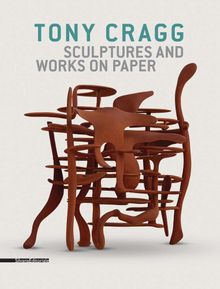 Tony Cragg: Sculptures and Works on Paper
Tony Cragg: Sculptures and Works on Paper
Published by Silvana Editoriale.
Text by Jorge Antonio Fernanadez Torres, Beate Reifenscheid.
This publication accompanies an exhibition of British sculptor Tony Cragg's (born 1949) latest sculptures and never-before-seen drawings and watercolors at the Ludwig Museum in Koblenz. Over the last 30 years, Cragg has developed an inexhaustible repertoire of forms and shapes that he continually adapts in his artistic practice.
PUBLISHER
Silvana Editoriale
BOOK FORMAT
Paperback, 8.25 x 10.75 in. / 120 pgs / 115 color.
PUBLISHING STATUS
Pub Date 2/27/2018
Active
DISTRIBUTION
D.A.P. Exclusive
Catalog: SPRING 2018 p. 191
PRODUCT DETAILS
ISBN 9788836637997 FLAT40
List Price: $35.00 CAD $47.50
AVAILABILITY
In stock
in stock $35.00 Free Shipping UPS GROUND IN THE CONTINENTAL U.S. |
 Anthony Cragg: Works on Paper Volume I
Anthony Cragg: Works on Paper Volume I
Published by Walther König, Köln.
Introduction by André Buchmann.
Over the past 30 years, Tony Cragg (born 1949) has created an impressive oeuvre of drawings and prints alongside his major sculptural works. This publication, the first in a five-volume edition, offers a comprehensive exploration of his drawings, watercolors, gouaches and prints.
PUBLISHER
Walther König, Köln
BOOK FORMAT
Hardcover, 8.75 x 11.25 in. / 420 pgs / 478 color.
PUBLISHING STATUS
Pub Date 9/26/2017
Active
DISTRIBUTION
D.A.P. Exclusive
Catalog: FALL 2017 p. 177
PRODUCT DETAILS
ISBN 9783960981169 FLAT40
List Price: $59.95 CAD $79.00
AVAILABILITY
Out of stock
STATUS: Out of stock Temporarily out of stock pending additional inventory. |
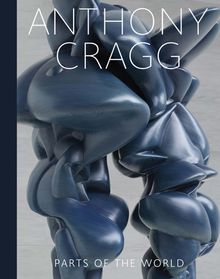 Anthony Cragg: Parts of the World
Anthony Cragg: Parts of the World
Retrospective
Published by Walther König, Köln.
Edited by Gerhard Finckh. Text by Germano Celant, Lynn Cooke, Peter Schjeldahl, Jon Wood, Thomas McEvilley.
Cragg’s work is immensely varied, encompassing drawing, sketching, modeling and photography, as well as the production of finished sculptures. All these elements of Cragg’s oeuvre are accounted for in Anthony Cragg: Parts of the World, the artist’s first retrospective monograph. Objects are arranged in roughly chronological order, and supplemented by texts drawn from the same chronological span, allowing the reader to reconstruct a history of Cragg’s reception as well as his artistic production. Including texts by Germano Celant, Lynn Cooke, Peter Schjeldahl and Thomas McEvilley written since the 1980s, Anthony Cragg: Parts of the World concludes in the present, with an essay by Jon Wood and a recent interview with the artist.
PUBLISHER
Walther König, Köln
BOOK FORMAT
Hardcover, 10 x 13 in. / 472 pgs / 574 color.
PUBLISHING STATUS
Pub Date 6/14/2016
Out of print
DISTRIBUTION
D.A.P. Exclusive
Catalog: FALL 2016 p. 104
PRODUCT DETAILS
ISBN 9783863359218 TRADE
List Price: $65.00 CAD $87.00
AVAILABILITY
Not available
STATUS: Out of print | 00/00/00 For assistance locating a copy, please see our list of recommended out of print specialists |
 Anthony Cragg: Parts of the World
Anthony Cragg: Parts of the World
A Film by Ralph Goertz
Published by Walther König, Köln.
PUBLISHER
Walther König, Köln
BOOK FORMAT
DVD, 5 x 7.5 in.
PUBLISHING STATUS
Pub Date 9/27/2016
Active
DISTRIBUTION
D.A.P. Exclusive
Catalog: SPRING 2017 p. 159
PRODUCT DETAILS
ISBN 9783863359157 FLAT40
List Price: $29.95 CAD $39.95
AVAILABILITY
In stock
in stock $29.95 Free Shipping UPS GROUND IN THE CONTINENTAL U.S. |
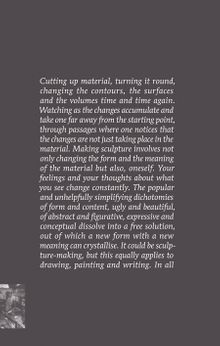 Tony Cragg: Matrix
Tony Cragg: Matrix
Published by Moderne Kunst Nürnberg.
Preface by Veit Görner. Text by Tony Cragg.
PUBLISHER
Moderne Kunst Nürnberg
BOOK FORMAT
Hardcover, 8 x 12 in. / 148 pgs / illustrated throughout.
PUBLISHING STATUS
Pub Date 4/30/2013
Active
DISTRIBUTION
D.A.P. Exclusive
Catalog: SPRING 2013 p. 182
PRODUCT DETAILS
ISBN 9783869843780 TRADE
List Price: $50.00 CAD $67.50
AVAILABILITY
In stock
in stock $50.00 Free Shipping UPS GROUND IN THE CONTINENTAL U.S. |
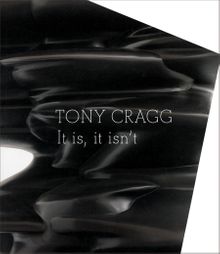 Tony Cragg: It Is, It Isn’t
Tony Cragg: It Is, It Isn’t
Published by Walther König, Köln.
Text by Mina Loy, Jon Wood. Poems by Wallace Stevens, Robert Frost, Walt Whitman, Conrad Aiken, Howard Nemerov, W.H. Auden, Billy Collins.
PUBLISHER
Walther König, Köln
BOOK FORMAT
Hardcover, 9.75 x 11.25 in. / 128 pgs / 42 color.
PUBLISHING STATUS
Pub Date 2/29/2012
Active
DISTRIBUTION
D.A.P. Exclusive
Catalog: SPRING 2012 p. 141
PRODUCT DETAILS
ISBN 9783863350437 FLAT40
List Price: $49.95 CAD $67.50
AVAILABILITY
In stock
in stock $49.95 Free Shipping UPS GROUND IN THE CONTINENTAL U.S. |
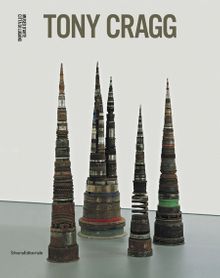 Tony Cragg
Tony Cragg
Published by Silvana Editoriale.
Text by Marco Franciolli, Guido Comis.
PUBLISHER
BOOK FORMAT
Paperback, 9.75 x 11.25 in. / 160 pgs / 150 color.
PUBLISHING STATUS
Pub Date 10/31/2012
Out of print
DISTRIBUTION
D.A.P. Exclusive
Catalog: FALL 2012 p. 108
PRODUCT DETAILS
ISBN 9788836622498 TRADE
List Price: $45.00 CAD $55.00
AVAILABILITY
Not available
STATUS: Out of print | 00/00/00 For assistance locating a copy, please see our list of recommended out of print specialists |
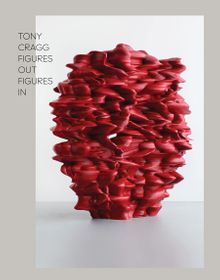 Tony Cragg: Figure Out Figure In
Tony Cragg: Figure Out Figure In
Published by Walther König, Köln.
Foreword by Henri Loyrette. Text by Tony Cragg, Catherine Grenier, Marie-Laure Bernadac. Interview by Marie-Laure Bernadac.
PUBLISHER
Walther König, Köln
BOOK FORMAT
Hardcover, 8.25 x 10.5 in. / 102 pgs / 70 color / 20 bw.
PUBLISHING STATUS
Pub Date 9/30/2011
Active
DISTRIBUTION
D.A.P. Exclusive
Catalog: SPRING 2012 p. 141
PRODUCT DETAILS
ISBN 9782916275871 TRADE
List Price: $39.95 CAD $53.95
AVAILABILITY
Out of stock
STATUS: Out of stock Temporarily out of stock pending additional inventory. |
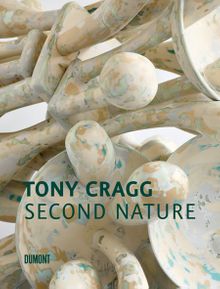 Tony Cragg: Second Nature
Tony Cragg: Second Nature
Published by DuMont.
PUBLISHER
DuMont
BOOK FORMAT
Hardcover, 9.75 x 12.75 in. / 256 pgs / 317 color.
PUBLISHING STATUS
Pub Date 2/28/2010
Out of stock indefinitely
DISTRIBUTION
D.A.P. Exclusive
Catalog: SPRING 2010 p. 164
PRODUCT DETAILS
ISBN 9783832191658 TRADE
List Price: $75.00 CAD $99.00
AVAILABILITY
Not available
STATUS: Out of stock indefinitely. |
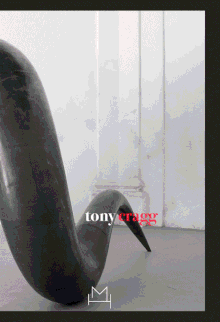 Tony Cragg: Nothing But Material
Tony Cragg: Nothing But Material
Published by Hopefulmonster Editore.
Edited by Olimpia Eberspacher. Introduction by Ludovico Pratesi. Interview by Ludovico Pratesi.
PUBLISHER
Hopefulmonster Editore
BOOK FORMAT
Hardcover, 6.5 x 8.5 in. / 60 pgs / 7 color / 10 bw.
PUBLISHING STATUS
Pub Date 3/1/2007
Out of print
DISTRIBUTION
D.A.P. Exclusive
Catalog: SPRING 2007 p. 164
PRODUCT DETAILS
ISBN 9788877572066 TRADE
List Price: $21.00 CAD $25.00
AVAILABILITY
Not available
STATUS: Out of print | 00/00/00 For assistance locating a copy, please see our list of recommended out of print specialists |
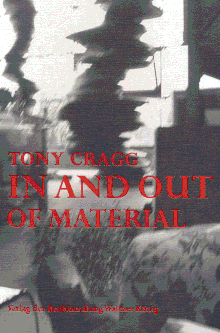 Tony Cragg: In and Out of Material
Tony Cragg: In and Out of Material
Published by Walther König, Köln.
Interview by John Wood. Text by Tony Cragg, Christoph Brockhaus, Robert Kudielka, Christian Schneegass.
PUBLISHER
Walther König, Köln
BOOK FORMAT
Hardcover, 6.75 x 9.5 in. / 288 pgs / 408 color.
PUBLISHING STATUS
Pub Date 3/1/2007
Out of print
DISTRIBUTION
D.A.P. Exclusive
Catalog: SPRING 2007 p. 70
PRODUCT DETAILS
ISBN 9783865601308 TRADE
List Price: $54.00 CAD $65.00
AVAILABILITY
Not available
STATUS: Out of print | 11/28/2010 For assistance locating a copy, please see our list of recommended out of print specialists |
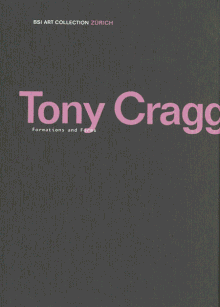 Tony Cragg: Formations and Forms
Tony Cragg: Formations and Forms
Published by JRP|Ringier/BSI Art Collection.
Edited by Luca Cerizza. Text by Saretto Cincinelli.
PUBLISHER
JRP|Ringier/BSI Art Collection
BOOK FORMAT
Hardcover, 5.5 x 7 in. / 80 pgs / 40 color / 40 bw.
PUBLISHING STATUS
Pub Date 7/1/2007
Out of print
DISTRIBUTION
D.A.P. Exclusive
Catalog: FALL 2007 p. 155
PRODUCT DETAILS
ISBN 9783905701913 TRADE
List Price: $15.00 CAD $17.50
AVAILABILITY
Not available
STATUS: Out of print | 00/00/00 For assistance locating a copy, please see our list of recommended out of print specialists |
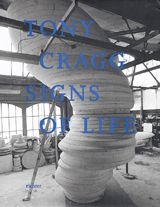 Tony Cragg: Signs Of Life
Tony Cragg: Signs Of Life
Published by Richter Verlag.
Essays by David Batchelor, Lynne Cooke, Germano Celant, Danilo Eccher, Carla Schulz-Hoffmann, Mark Francis, Peter Schjeldahl and Ulrich Wilmes.
PUBLISHER
Richter Verlag
BOOK FORMAT
Clothbound, 8.75 x 11 in. / 552 pgs / 465 color / 42 bw.
PUBLISHING STATUS
Pub Date 2/2/2004
Out of print
DISTRIBUTION
D.A.P. Exclusive
Catalog: SPRING 2004
PRODUCT DETAILS
ISBN 9783933807892 TRADE
List Price: $75.00 CAD $90.00
AVAILABILITY
Not available
STATUS: Out of print | 5/11/2007 For assistance locating a copy, please see our list of recommended out of print specialists |
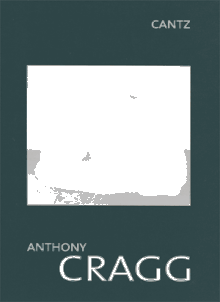 Anthony Cragg
Anthony Cragg
Published by Cantz.
Artwork by Tony Cragg. Edited by Ulrich Wilmes. Text by Susanne Gaensheimer.
PUBLISHER
Cantz
BOOK FORMAT
Hardcover, 6.5 x 9.25 in. / 160 pgs / 36 color / 34 bw
PUBLISHING STATUS
Pub Date 5/2/1999
Out of print
DISTRIBUTION
D.A.P. Exclusive
Catalog: SPRING 1999
PRODUCT DETAILS
ISBN 9783893229550 TRADE
List Price: $35.00 CAD $40.00
AVAILABILITY
Not available
STATUS: Out of print | 4/23/2003 For assistance locating a copy, please see our list of recommended out of print specialists |
PUBLISHER
Cantz
BOOK FORMAT
Hardcover, 8.5 x 11.25 in. / 128 pgs / 30 color / 70 bw / 14 duotone
PUBLISHING STATUS
Pub Date 12/2/1993
Out of print
DISTRIBUTION
D.A.P. Exclusive
Catalog: UNKNOWN 1990
PRODUCT DETAILS
ISBN 9783893226085 TRADE
List Price: $40.00 CAD $50.00
AVAILABILITY
Not available
STATUS: Out of print | 4/23/2003 For assistance locating a copy, please see our list of recommended out of print specialists |

